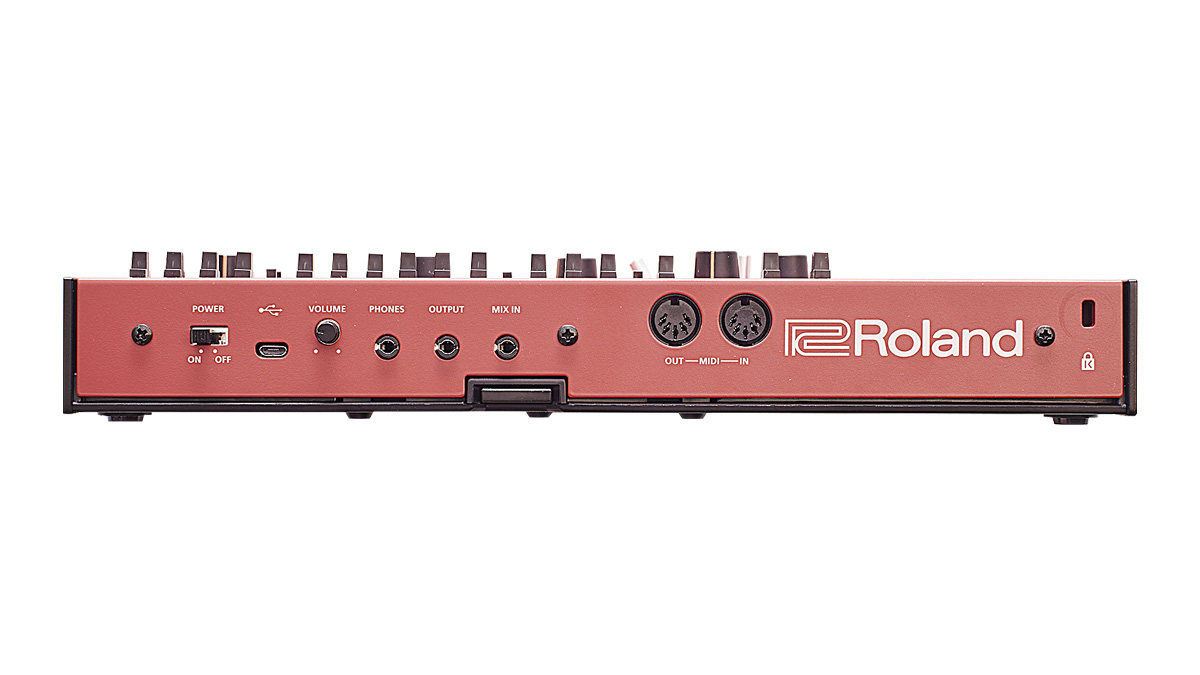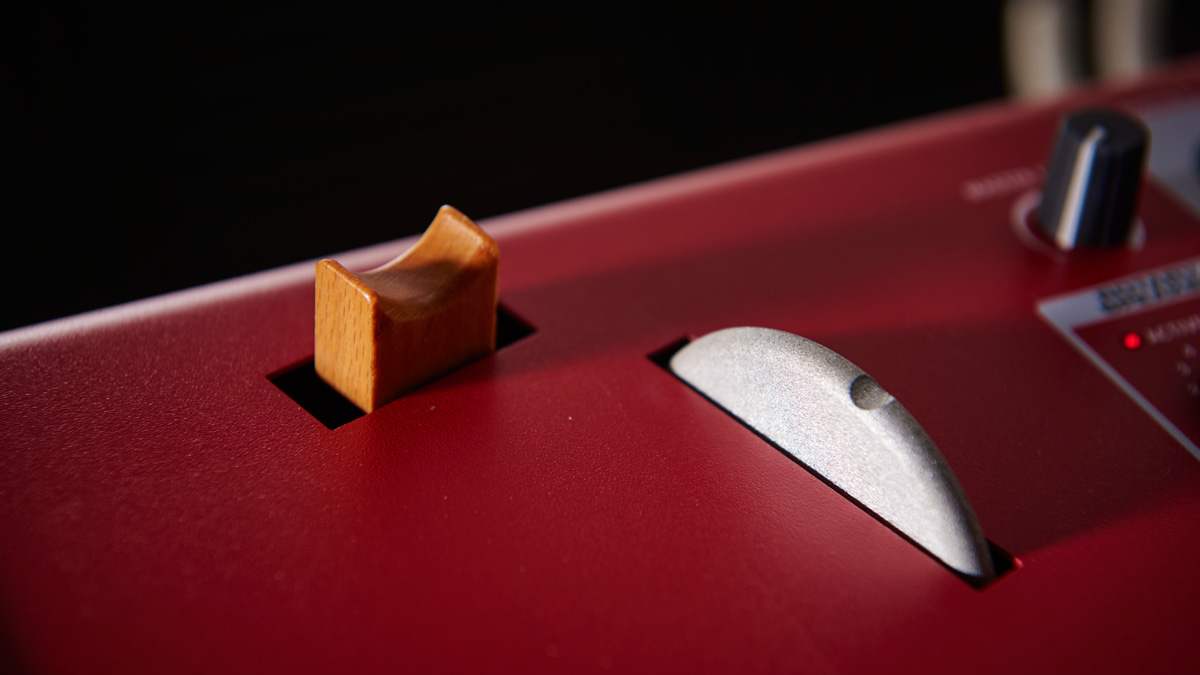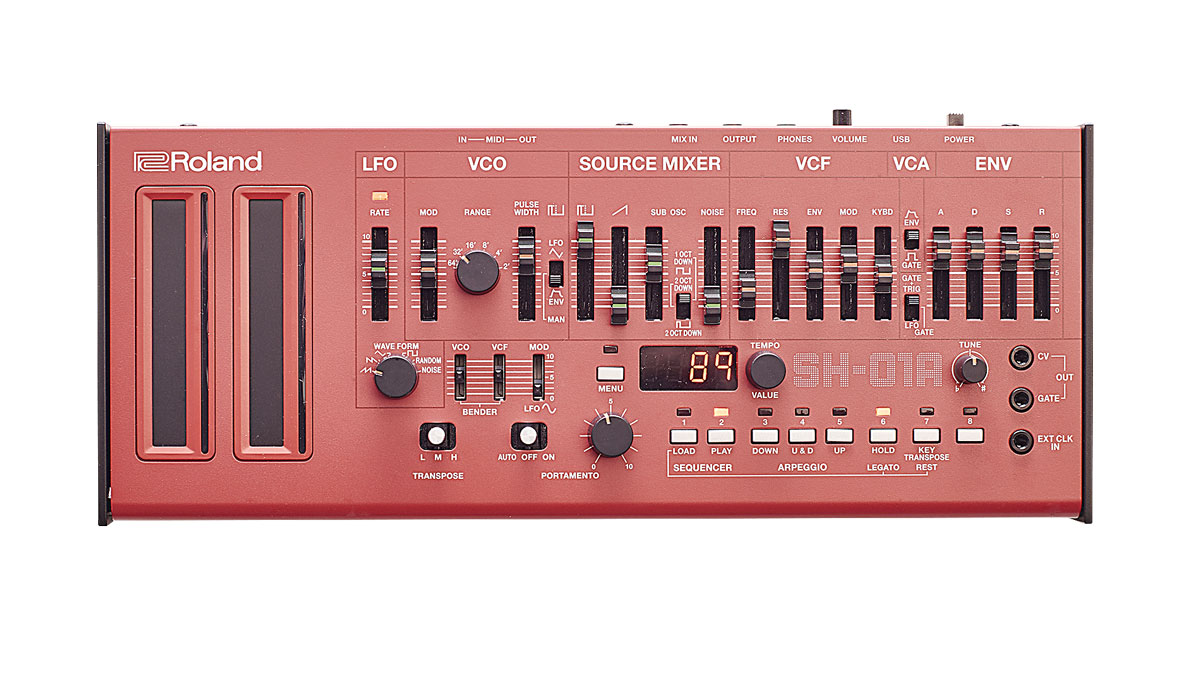MusicRadar Verdict
A fun and engaging synth that also stands-up well to comparison with the classic unit it’s based on. Polyphony is a nice extra addition, too.
Pros
- +
All the controls of the original are there, as is the ability to send and receive MIDI CC messages.
- +
Unison, Chord, and four-voice Polyphonic modes expand this 101’s sonic palette.
Cons
- -
Unison mode offers no option for tweaking the tuning or panning of stacked voices.
MusicRadar's got your back
The early years of the 1980s were an interesting time for synthesizers, and few manufacturers summed-up the changes taking place better than Japanese legend Roland.
Prior to this, most synths were large, heavy and with obligatory wooden trim. Inside they usually featured multiple printed circuit-boards (PCBs) containing large numbers of discrete components. Move into the ’80s, however, and single PCB designs became easier and cheaper to create. In turn, smaller custom-designed plastic casings were employed.
Taken together, all these changes meant that buying a synthesizer became increasingly affordable. Despite this, polyphonic synthesisers were still relatively costly, making monosynths the likely first purchase of any budding synth lover.
Roland’s SH-101, introduced in 1982, ticked most of the boxes for this new breed of instrument: it was a small, plastic, 32-key monosynth with a simple architecture that provided direct hands-on control and no preset memories. Despite being released in the same year as MIDI’s first commercial use, it stuck firmly to analogue triggering, and offered no built-in effects. It did, however, tip a nod to the increasingly digital age with its 100-step sequencer and arpeggiator.

The original SH-101 was a simple beast. Sound generation was based around a single VCO section, with the basic square and sawtooth waveforms generated by a Curtis CEM3340 IC (the same chip used in Roland’s Jupiter-6 and Oberheim’s OB-8, amongst many others). You also had access to a configurable square-wave sub-oscillator.
The different waveforms and the noise source could be mixed independently, with the result routed though a Roland filter circuit based around the IR3109 chip. Although used in other Roland synths, its implementation did vary, with the 101 having a more pronounced bite than some of its siblings.
Filter cutoff could be modulated by the single four-stage envelope, with the VCA (amp stage) either sharing this or switchable to a gated (on/off) affair. Interestingly, this envelope could be triggered by the notes played on the keyboard (and CV/Gate input) or the LFO. The LFO itself could also control pulse-width, pitch and filter cutoff (and was also the internal timebase for the sequencer and arpeggiator) and included random and noise outputs, that widened the palette of available sounds. The final element was the adjustable Portamento, that when switched to Auto (legato) mode, allowed the creation of the famous 101 note slides.
Want all the hottest music and gear news, reviews, deals, features and more, direct to your inbox? Sign up here.
The love for the SH-101 wasn’t just about its sound; it also has a simple but effective sequencer and arpeggiator to spice things up. Like the original, the sequencer is programmed by pressing the Load button and playing a series of notes. The Rest and Legato keys can be used to alter the rhythm and create longer or spaced-out notes. Playback is simply a case of pressing the Play button, whereupon sequences will be repeated continuously. Pressing Key Transpose and playing a key (other than middle C) allows you to alter the tuning of the sequence in real time.
Although much of this looks broadly similar to a monophonic Juno (6, 60 and 106), the 101’s use of a VCO (rather than DCO), and raw filter made for a somewhat different sound, particularly when pushed to higher resonance settings. The SH-101 was also the ideal portable keyboard, and the addition of a new set of batteries and optional ‘mod grip’ turned it, in Roland’s view at least, into the height of ’80s keytar fashionability.
This brings us to Roland’s new SH-01A, a digital recreation of the SH-101, and part of its ever-growing Boutique range. Like others in the range, you can plug the 01A into an optional K-25m keyboard assembly, or hook it up to other gear via the MIDI and USB ports. Audio output is via 3.5mm stereo mini-jack (or built-in mini speaker) and power comes from USB or four AA batteries.
The control layout is quite similar the original, looking and feeling very much like a shrunken 101 (like its precursor it’s also available in grey, red or blue). On the programming front, the most obvious differences are in the expanded VCO range and two additional saw waveforms in the LFO section. There are also the Boutique’s now-obligatory numeric display, menu button and value knob, which provide access to additional modes and settings. One of the most notable is that fact that the new 01A can play polyphonically (up to four notes), and has a unison mode for additional fatness.

Unfortunately, the rather frustrating two-page manual provides little explanation of what some of these do. It appears that Noise mode allows you to switch between ‘Original’ noise and a ‘Variation’, which is closer to a (brighter) white noise spectrum. The ‘Advanced’ LFO option seems only to alter its frequency range - but it does make a range of FM tones more achievable.
Though purists may balk, having the possibility of polyphony is welcome. Unison mode is also a nice addition, though it’s a shame there’s no control over the relative detuning and panning of the four layers. Being a modern design, the SH-01A has a healthy CC spec that allows sending and receiving of all front panel controls, including remote MIDI control of some system settings. Thankfully also, the sequencing and arpeggiation skills of the original are maintained, though with 64 pattern storage slots to accompany the 64 preset memories.
Taken on its own, the SH-01A is a fun and engaging synth, and when compared to a ‘real’ SH-101 stands up very well. We did plenty of A/B testing, and although the parameter ranges differed slightly, there were times when it was difficult to differentiate the two. If you must have 100% analogue, then this isn’t for you, but if you have an open mind, you might be pleasantly surprised.
- More of the best cheap synthesizers
